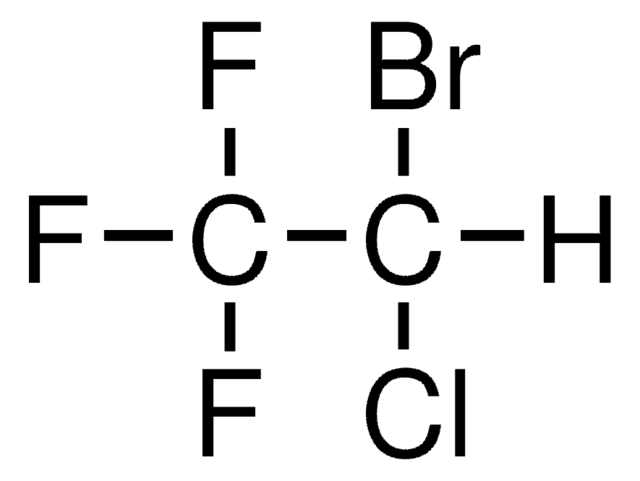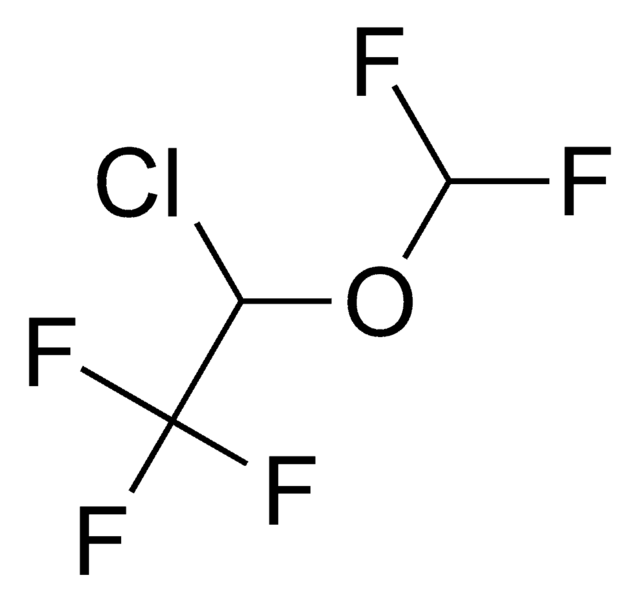Wichtige Dokumente
B4388
2-Brom-2-chlor-1,1,1-trifluorethan
≥99%
Synonym(e):
Halothan
About This Item
Empfohlene Produkte
Dampfdruck
4.5 psi ( 20 °C)
Qualitätsniveau
Assay
≥99%
Form
liquid
Enthält
0.01% thymol as stabilizer
Brechungsindex
n20/D 1.369 (lit.)
bp
50.2 °C (lit.)
Dichte
1.872 g/mL at 25 °C (lit.)
SMILES String
FC(F)(F)C(Cl)Br
InChI
1S/C2HBrClF3/c3-1(4)2(5,6)7/h1H
InChIKey
BCQZXOMGPXTTIC-UHFFFAOYSA-N
Angaben zum Gen
human ... ATP5D(513) , GABRA1(2554) , GABRA2(2555) , GABRA3(2556) , GABRA4(2557) , GABRA5(2558) , GABRA6(2559) , GABRB1(2560) , GABRB2(2561) , GABRB3(2562) , GABRD(2563) , GABRE(2564) , GABRG1(2565) , GABRG2(2566) , GABRG3(2567) , GABRP(2568) , GABRQ(55879) , GLRA1(2741) , GLRB(2743) , GRIA1(2890) , KCNK10(54207) , KCNK18(338567) , KCNK2(3776) , KCNK3(3777) , KCNK9(51305) , KCNN4(3783)
Suchen Sie nach ähnlichen Produkten? Aufrufen Leitfaden zum Produktvergleich
Anwendung
Biochem./physiol. Wirkung
Signalwort
Danger
H-Sätze
Gefahreneinstufungen
Eye Dam. 1 - Repr. 1B - Skin Irrit. 2 - STOT SE 3
Zielorgane
Respiratory system
Lagerklassenschlüssel
6.1C - Combustible acute toxic Cat.3 / toxic compounds or compounds which causing chronic effects
WGK
WGK 3
Flammpunkt (°F)
Not applicable
Flammpunkt (°C)
Not applicable
Persönliche Schutzausrüstung
Eyeshields, Gloves
Hier finden Sie alle aktuellen Versionen:
Besitzen Sie dieses Produkt bereits?
In der Dokumentenbibliothek finden Sie die Dokumentation zu den Produkten, die Sie kürzlich erworben haben.
Kunden haben sich ebenfalls angesehen
Unser Team von Wissenschaftlern verfügt über Erfahrung in allen Forschungsbereichen einschließlich Life Science, Materialwissenschaften, chemischer Synthese, Chromatographie, Analytik und vielen mehr..
Setzen Sie sich mit dem technischen Dienst in Verbindung.











